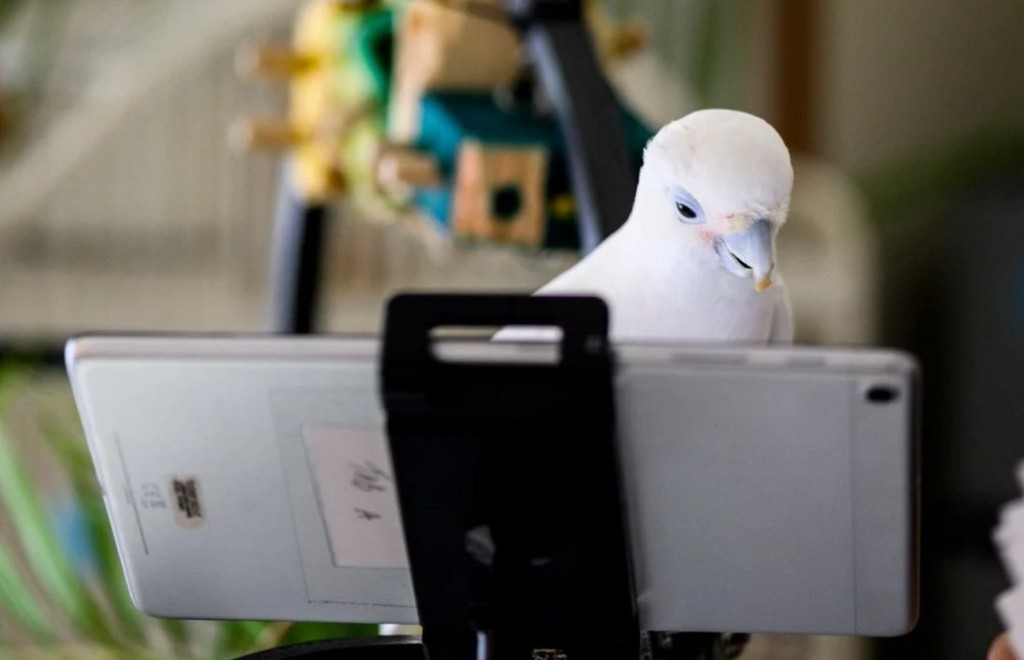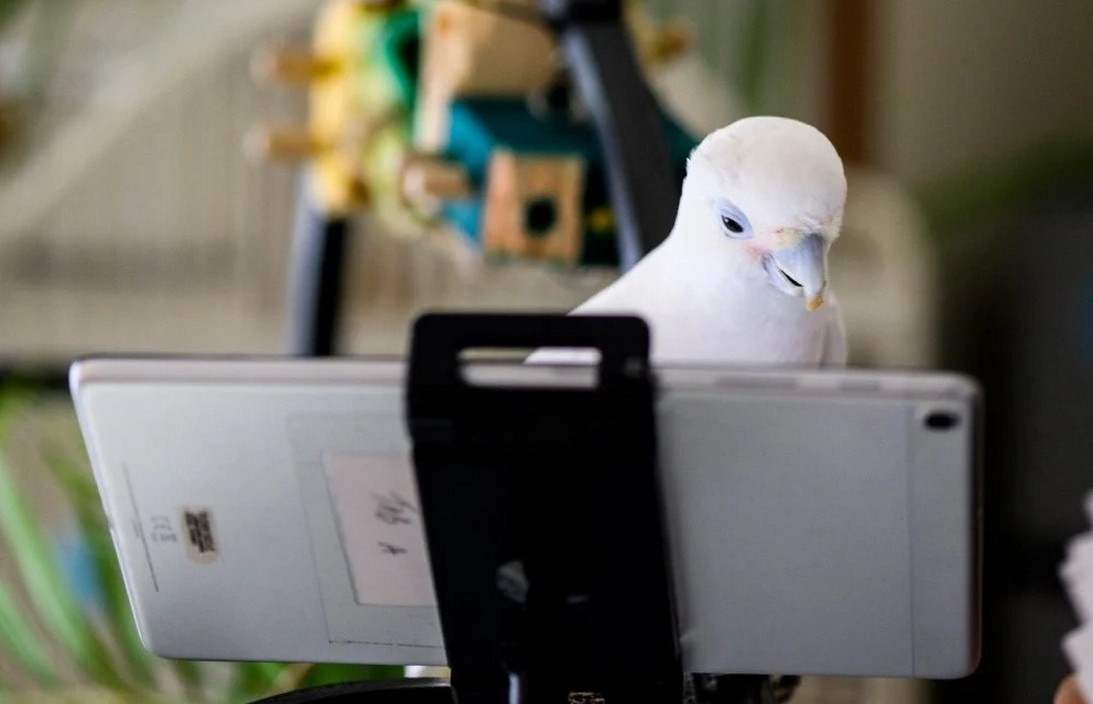
Over 20 million parrots are kept as pets in American households, and a study wanted to see if these social birds would enjoy video calling each other just like humans.
The Birds of a Feather study recruited more than a dozen parrot owners and their birds, to see if parrot loneliness, a real danger to the birds’ mental health, could be improved through access to video calling.
It’s no word of a lie to say that platforms like Zoom, Skype, and Facetime saved lives during the strict lockdowns during COVID-19, but humans aren’t the only creatures capable of utilizing and benefiting from video calls to friends.
The study, organized by Northwestern University in collaboration with scientists from MIT and the University of Glasgow, taught the parrots to initiate video calls with other parrots by instructing them to ring a bell, and then touch the picture of another parrot on a tablet screen to start the call.
The owners were experienced parrot keepers who knew how to identify signs of fear, aggression, or disinterest with the video call, which might lead to damage to the cages or the birds.
In the first phase of the study, the 18 parrots initiated 212 video calls with a maximum allowed time of 5 minutes. Some dropped out of the study, leaving just 15 going into the second phase.
In the “open call” period that followed, the 15 birds made 147 video calls with each other over the next two months. The birds were also able to select which individual they wanted to call.
Not only did the birds initiate calls freely and seem to understand that a real fellow parrot was on the other end, but caretakers overwhelmingly reported the calls as positive experiences for their parrots, according to a statement from Northwestern.
Some caregivers watched their birds learn skills from their video friends, including foraging, new vocalizations, and even flying. Some wanted to show the other bird on the line their toys. “She came alive during the calls,” reported one caregiver.
A few significant findings emerged. The birds engaged in most calls for the maximum allowed time. They formed strong preferences—in the preliminary pilot study, Northwestern researcher Jennifer Cunha’s bird, Ellie, a Goffin’s cockatoo, became fast friends with a California-based African grey named Cookie. “It’s been over a year and they still talk,” Cunha told the univ. press.
MORE ANIMALS NEWS: New Research Shows Why Crows Are So Intelligent and Even Self-Aware—Just Like Us
Two older, weaker macaws also formed a fast friendship that carried on long after the end of the study, and would frequently call to each other, saying “Hi, hello, come here.”
Also, the birds that initiated the most calls were the birds that received the most requests to chat from other birds, a finding mirrored in humans.
The researchers caution that the findings don’t mean parrot owners should fire up a Zoom call and assume it will go well. The participant parrots had experienced handlers who had time to introduce the technology slowly and to carefully monitor their parrots’ reactions.
MORE BRILLIANT BIRDS: Male or Female, Old or Young, New Survey Show Parrots Can All Speak at the Same Level
As the study underscored, parrots are finicky about which fellow birds they will respond to—unmediated interactions could lead to fear, even violence, and property damage; larger parrots have beaks more than capable of cracking an iPad into pieces.
Still, it’s deeply moving to watch—in the documentary below—these brilliant birds feel a connection with new friends hundreds of miles away, especially knowing that a social life is key to a parrot’s health.
WATCH the 5-minute doc below…
SHARE This Inspiring Study Of Animal Welfare With Your Flock…




















